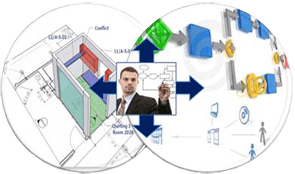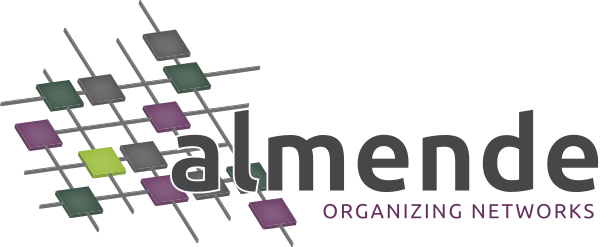Adapt4EE


Adapt for Energy Efficiency
Duration: 10/2010 – 10/2014 Funding: FP7
Adapt4EE
Energy efficiency criteria are usually only set in relation to the construction or maintenance of buildings. Energy consumption resulting from actual use of the structure is often left ignored. This is a waste, because most energy is consumed during the operation phase of a building. Altering aspects of the building to accomodate for real life use, results in high costs.
The Adapt4EE project partners developed new simulation and modeling tools, which allow designers and architects to use information about occupants (presence, movement, activities) early on in the design phase of architectural project.
Simulation tools that were previously available often allowed for modeling of thermal processes, lighting, acoustics and fluid dynamics, but did not not take into account the actual human occupants. Further, they were mainly meant for research purposes, and were therefor rarely used by actual designers, because of their steep learning curve.
Multi-type sensors have been used to evaluate user behaviour and occupancy. Based on these observation, future occupancy and business patterns can be predicted.
The challenge was to incorporate many diverse factors, from environmental factors (climate, (day)light) and maintenance, to business processes and occupant behaviour (psychological processes, personal preferences). Adapt4EE combined different existing modeling languages and methods to develop a holistic multi-agent based simulation framework that could aggregate information from many different sources.
Contribution
Almende delivered a training tool for calibrating (predifined) business proces models, such that they better explain real-world measurements, related to occupancy and energy consumption of the building. Also, a generic agent-based simulation tool was developed which is able to co-simulate with the widely used EnergyPlus to help evaluate buildings designs in terms of economical, ecological and social performance (that is business efficiency, energy costs and occupant comfort).
Results
To Almende, the benefits of this project were among others the creation of the simulation toolkit including algorithms for ad-hoc allocation of resources to business process instances. It also enabled Almende to apply several newly developed visualizations of Almende's vis.js toolkit. Besides that, the company extended the expertise, skills and competencies in among others agile development, business processes modelling, semantic reasoning and evolutionary competition.
More info?
Need specific information regarding the project? Please contact our senior consultant for more information.


